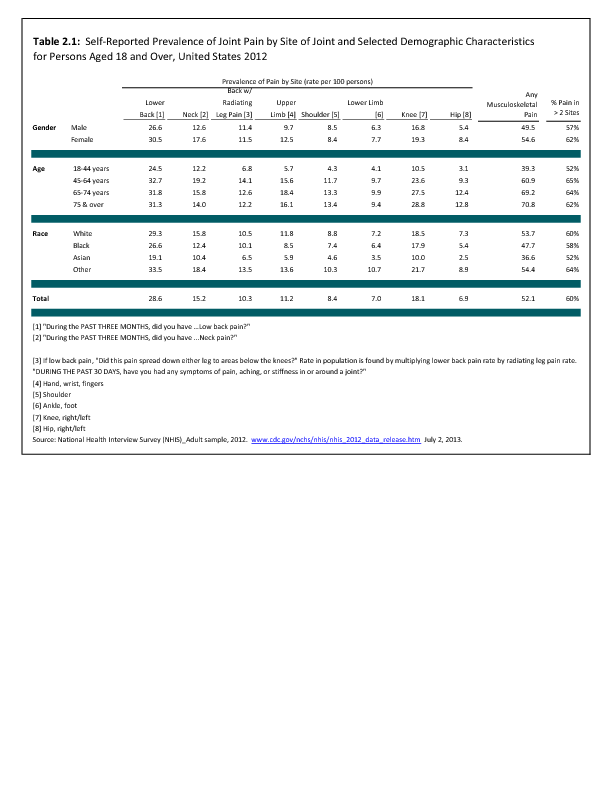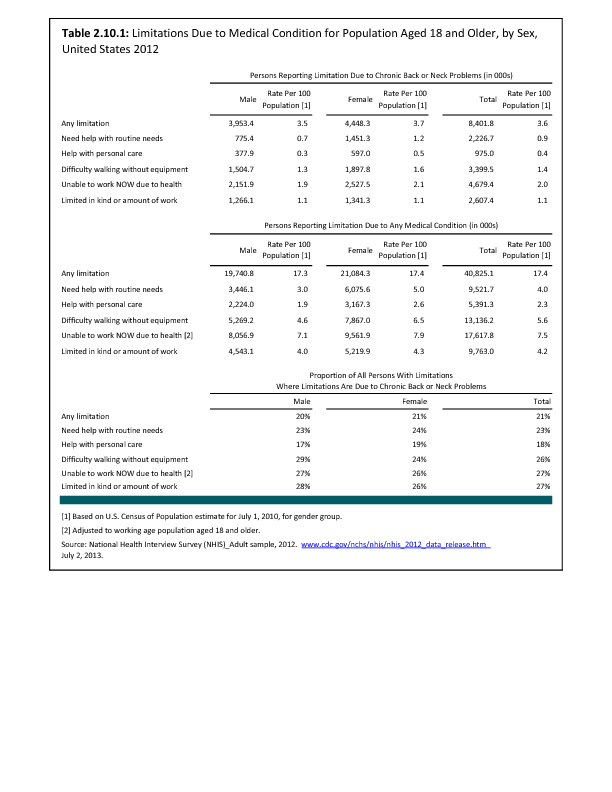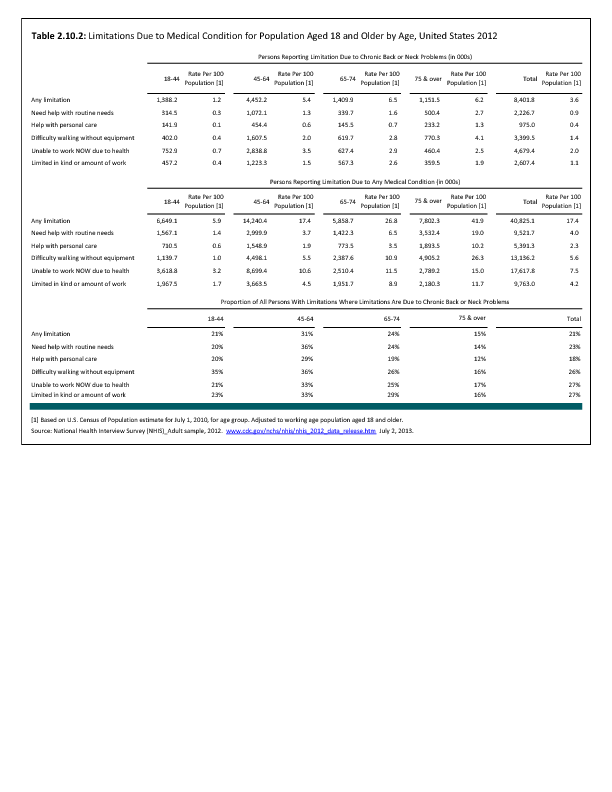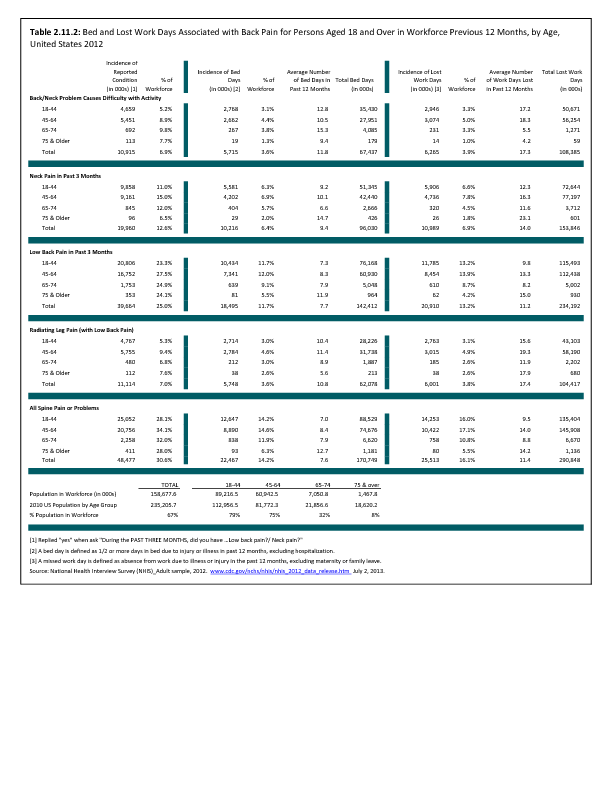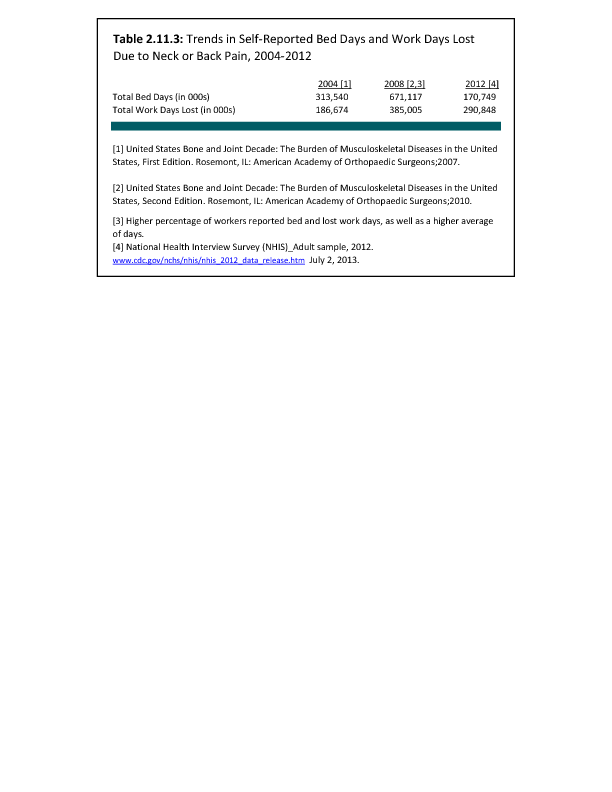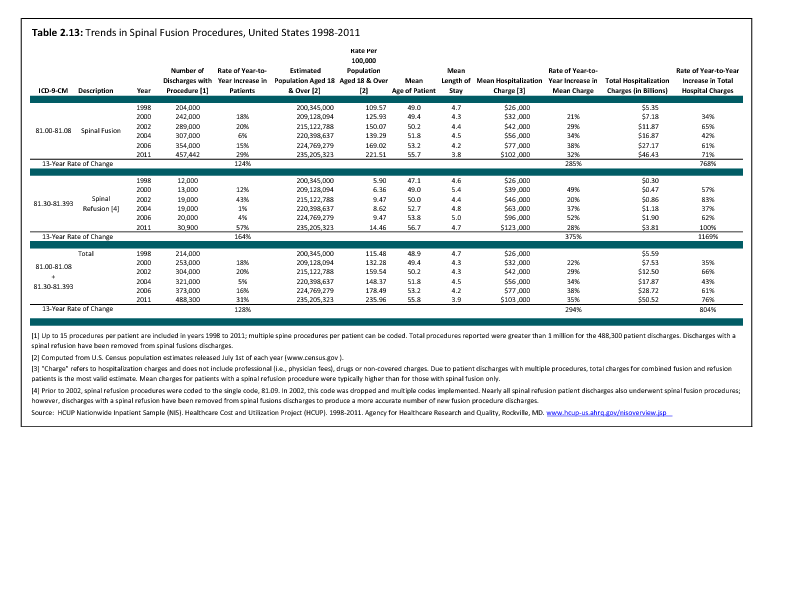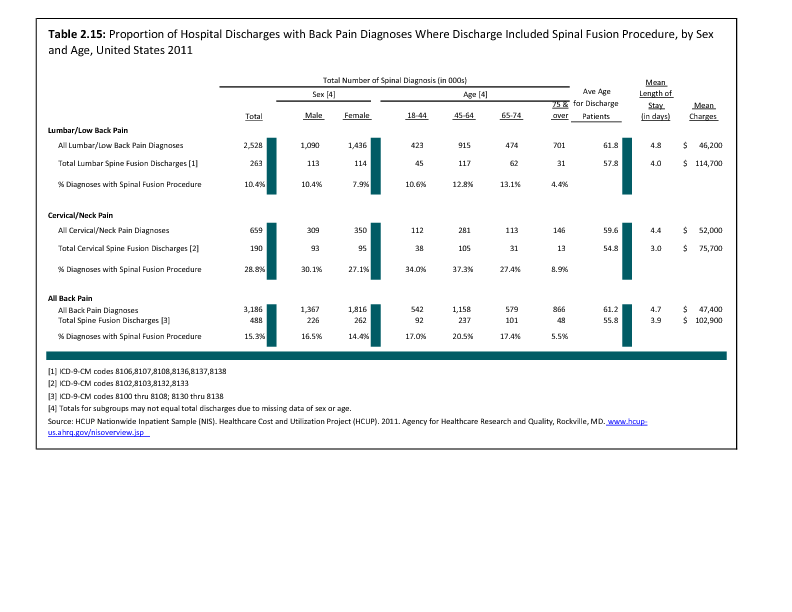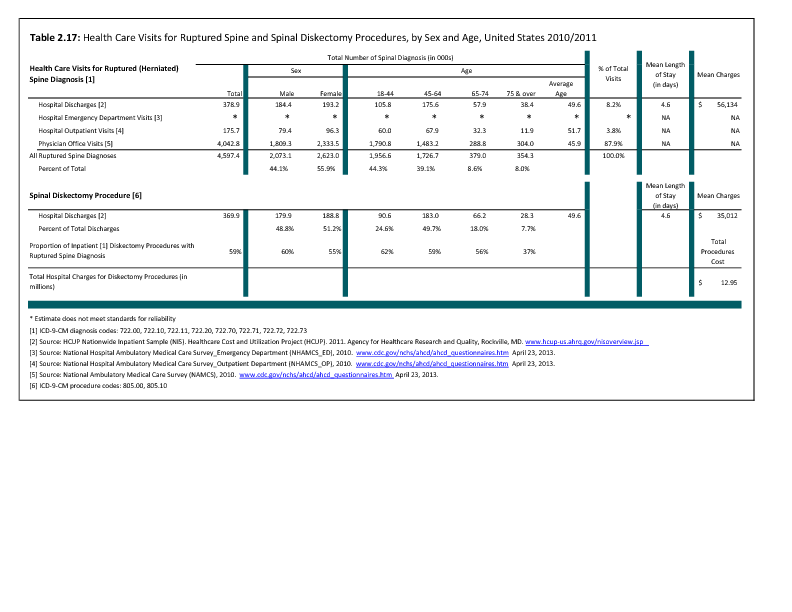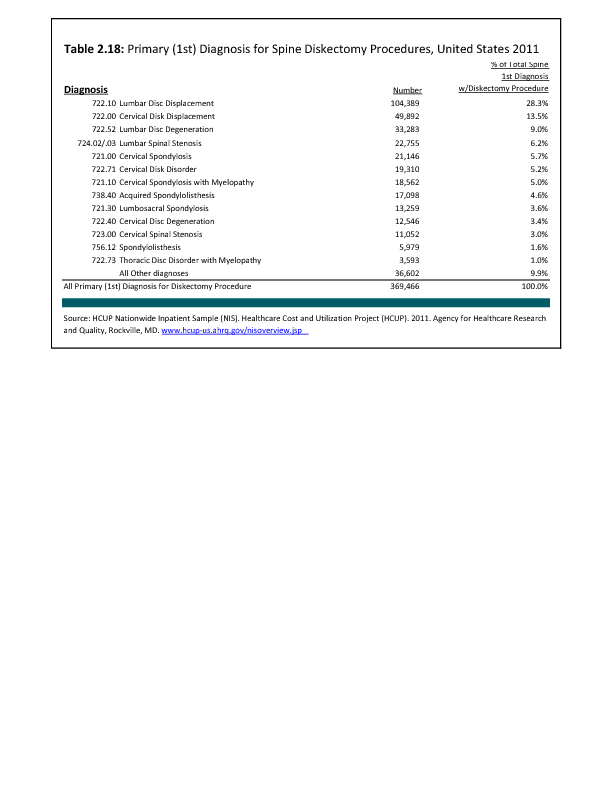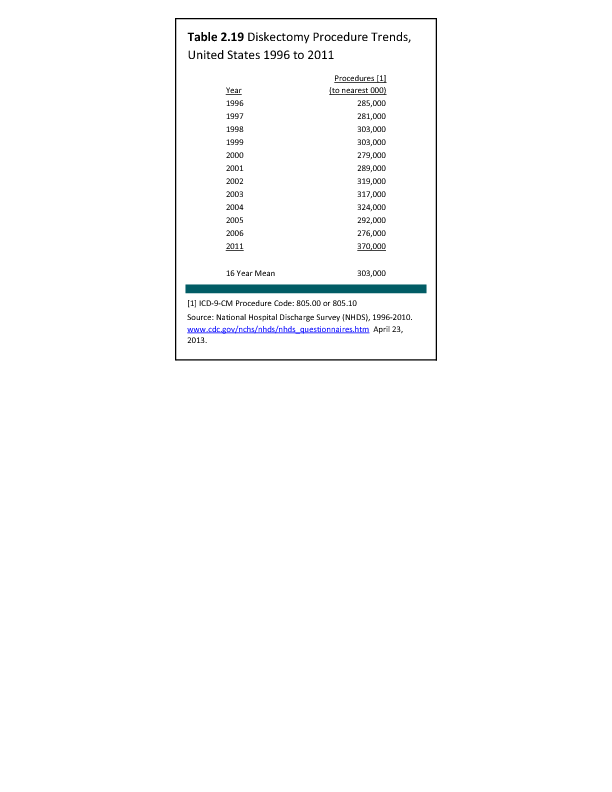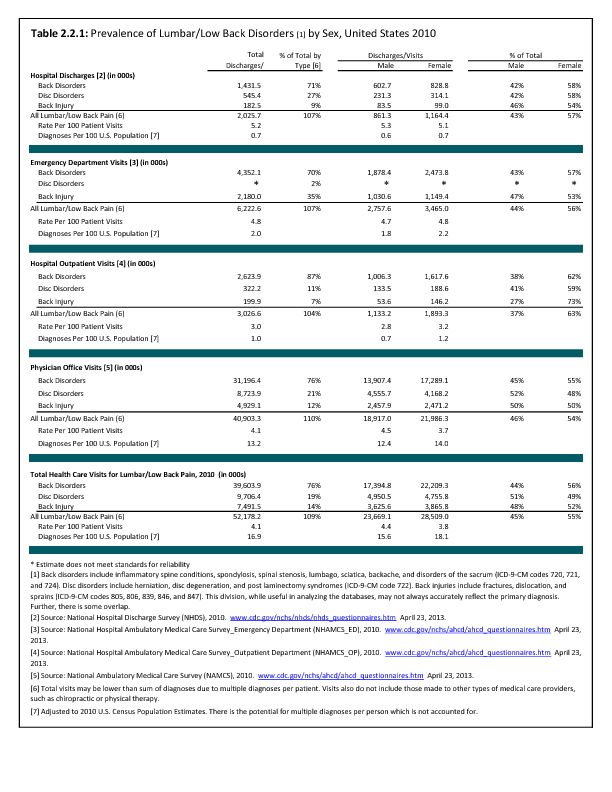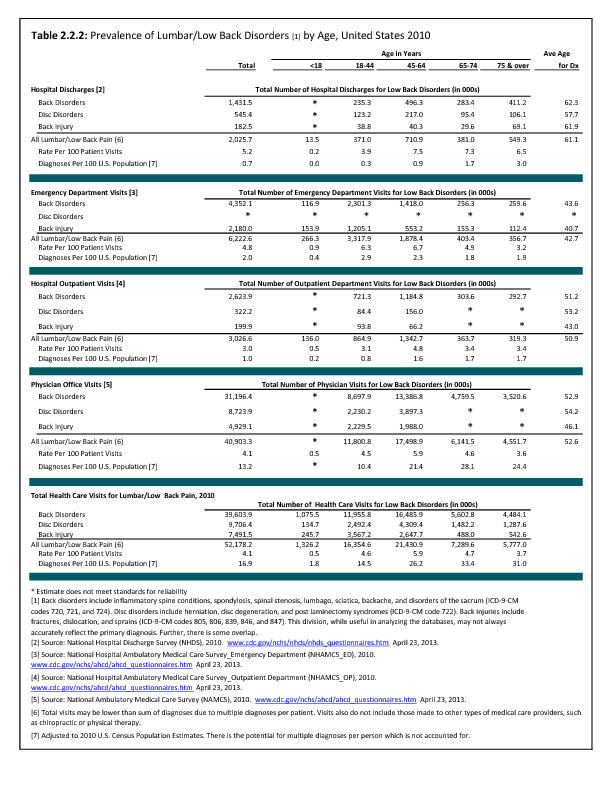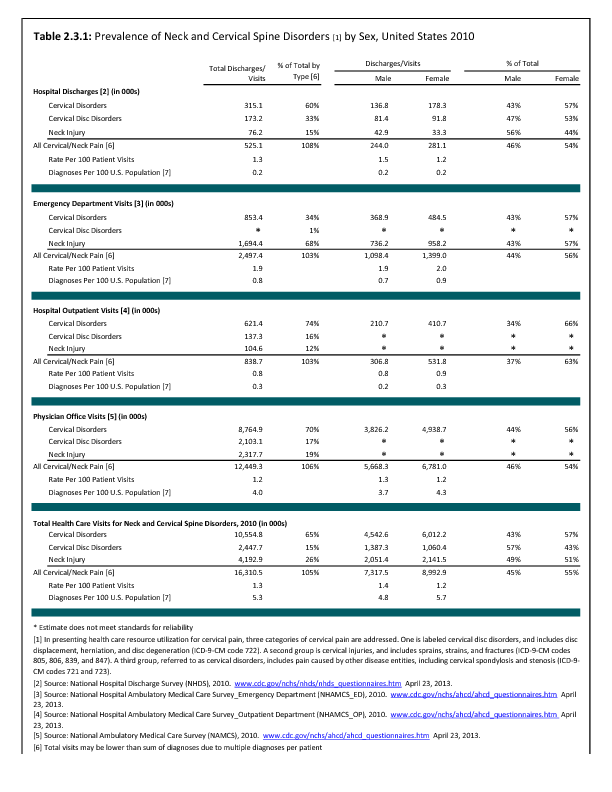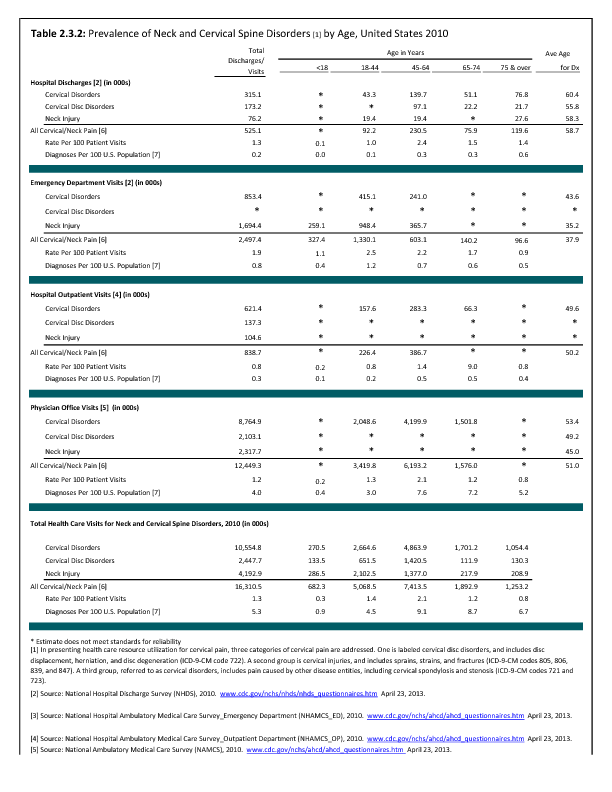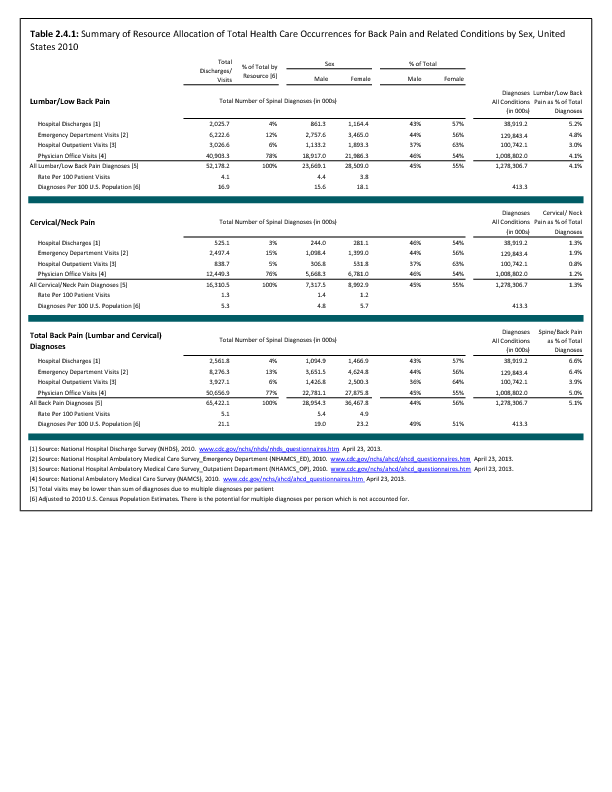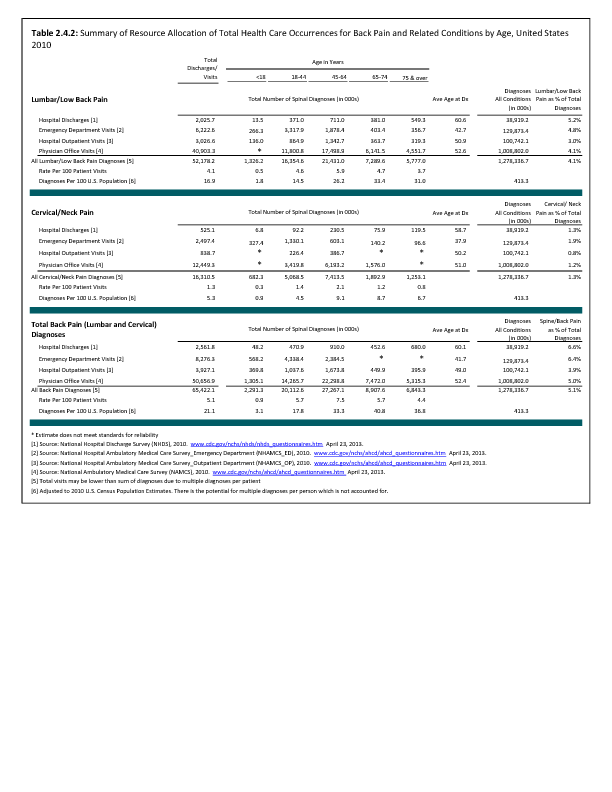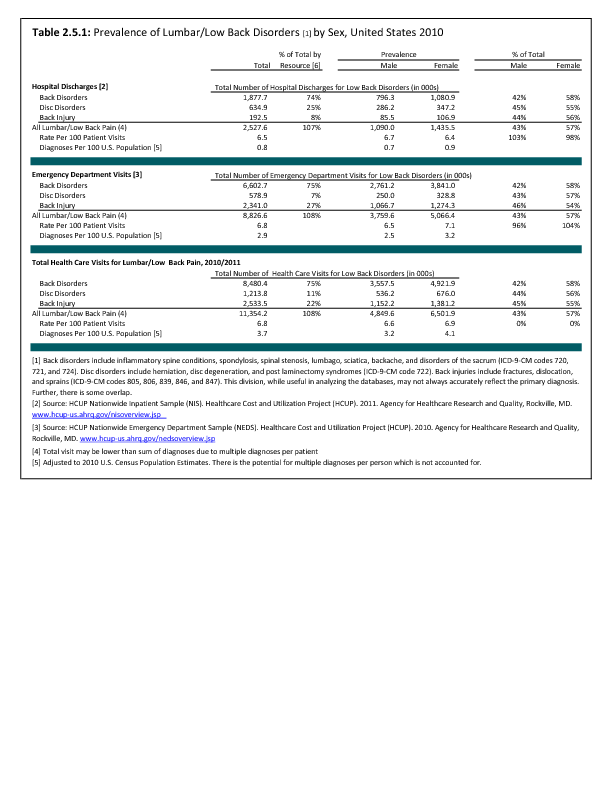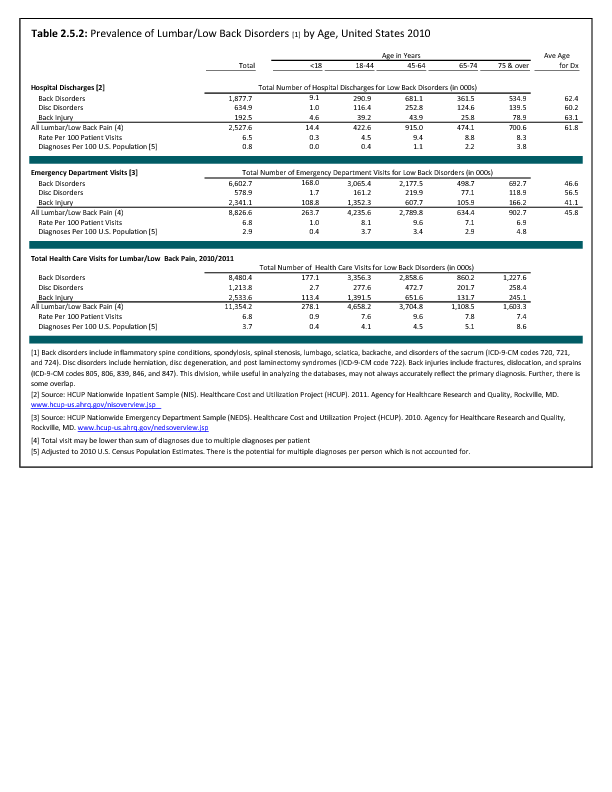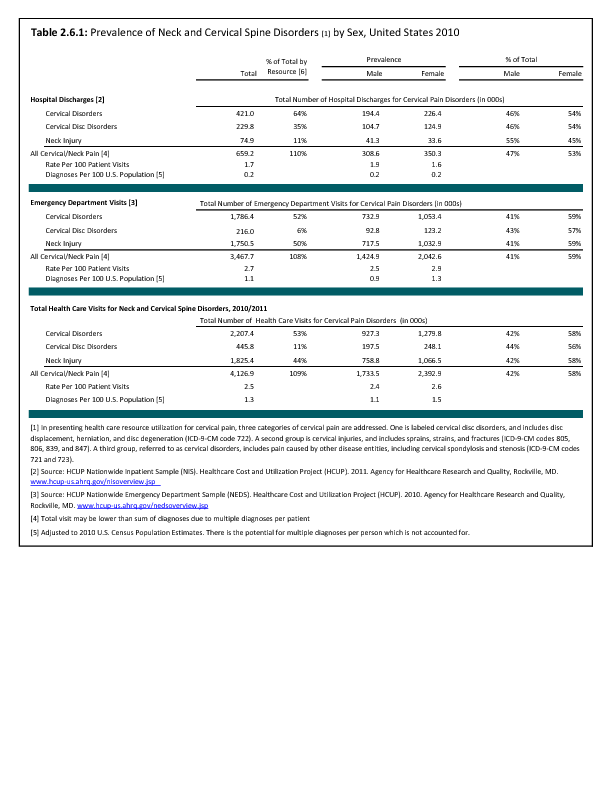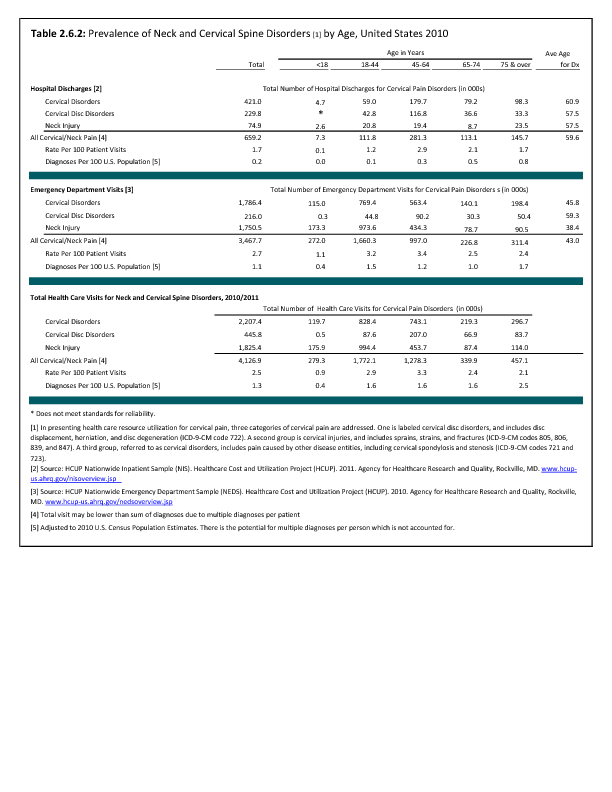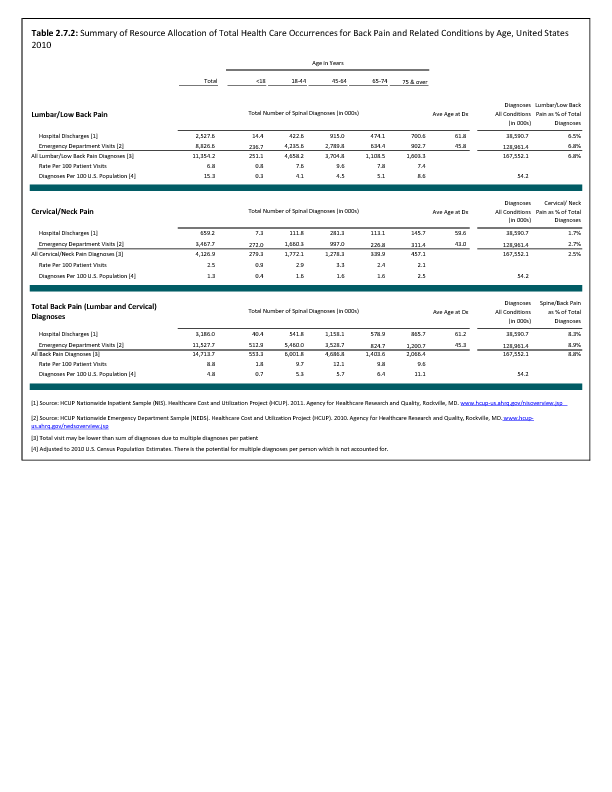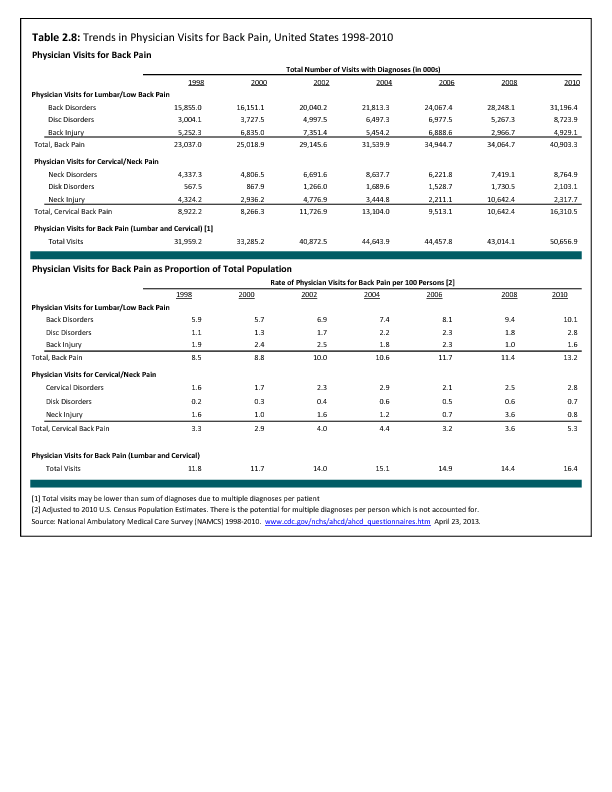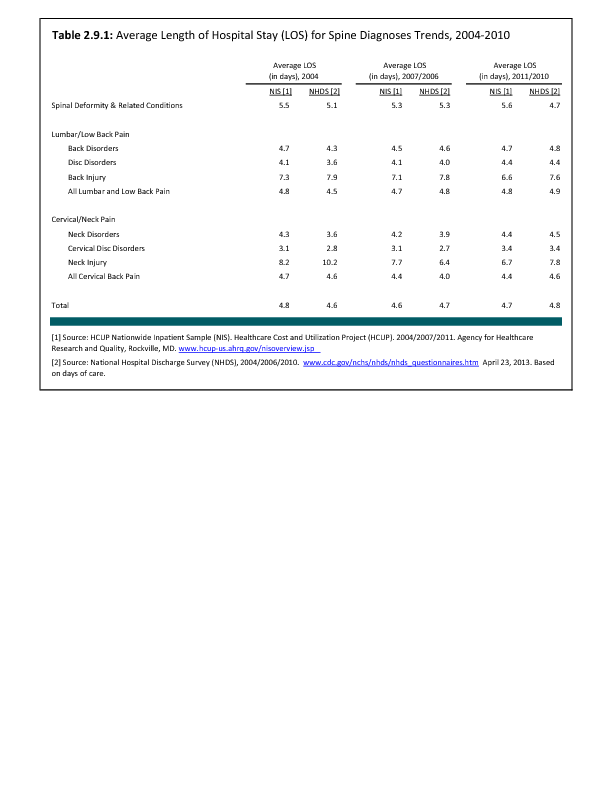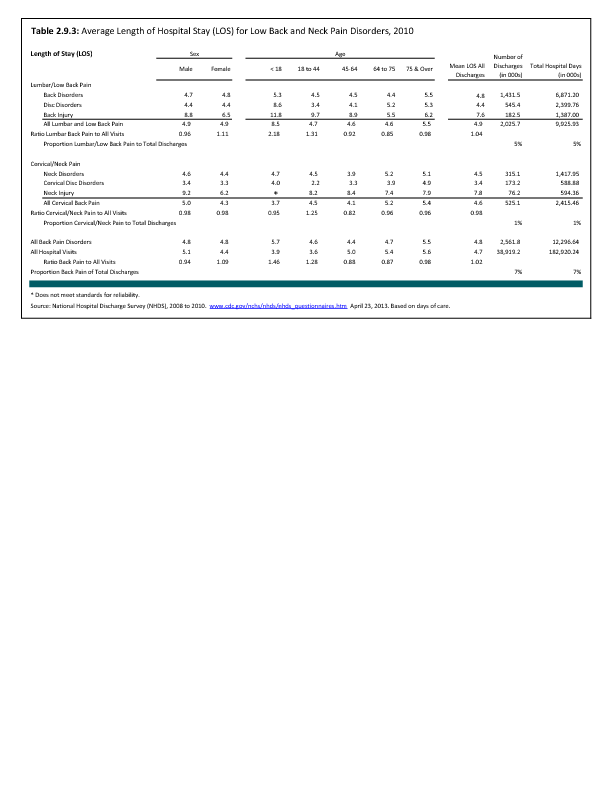In 2012, nearly 29% of the US population age 18 years and older self-reported having had low back pain during the past three months. Among persons reporting low back pain, one in three (36%) suffered from back pain radiating into the leg. This is a greater percentage of pain than is reported for the upper limbs (shoulder, arm, elbow, wrist, and hands) and the lower limbs (hip, knees, ankles, and feet). Approximately one-third of persons reporting low back pain also experience neck pain. Among person reporting neck pain, the proportion experiencing back pain is as high as 71%. Both lower back and neck pain are reported in higher rates by females (30.5%; 17.6%) than males (26.6%; 12.6%). The highest rates for back and neck pain reported for both genders occur in the 45- to 64-year age group; there is a slight decrease in back and neck pain complaints in subsequent years (65 years and older), unlike that which occurs with pain reported in other joints. (Reference Table 2.1 PDF CSV)
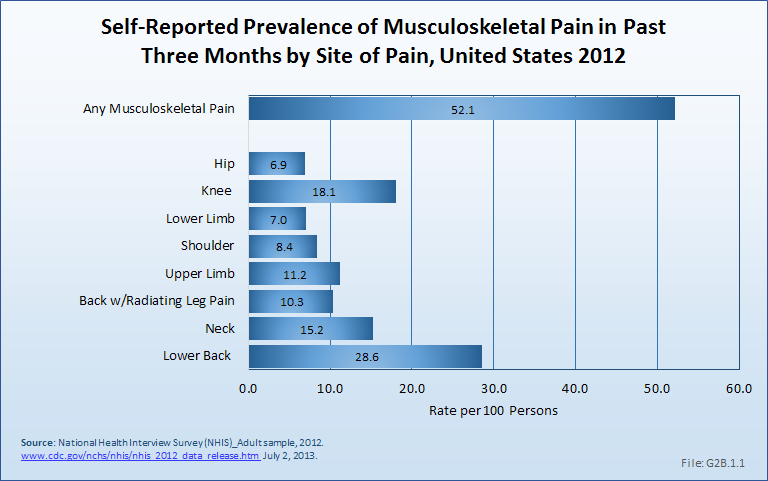
As discussed previously, the health care utilization by people with low back pain is only in part understood because of lack of information about visits to chiropractors, physical therapists, and others involved in the care of back pain. Even so, the reported numbers in the databases are very high. Data from the NCHS reports more than 52 million visits to hospitals, emergency departments, outpatient clinics, and physician offices with a diagnosis of low back pain. Four of five visits were to physician offices, but more than 2 million patients were hospitalized. (Reference Table 2.2.1 PDF CSV, and Table 2.4.1 PDF CSV)
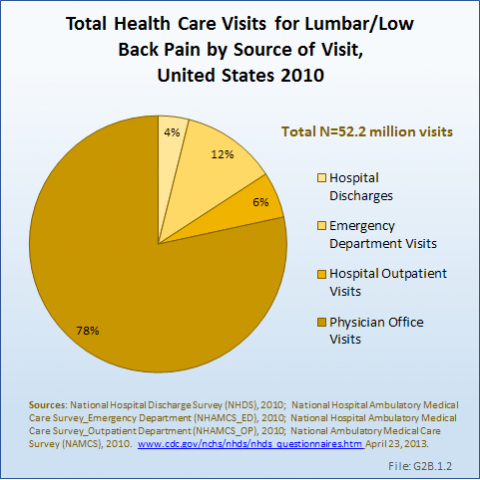
Edition:
- 2014



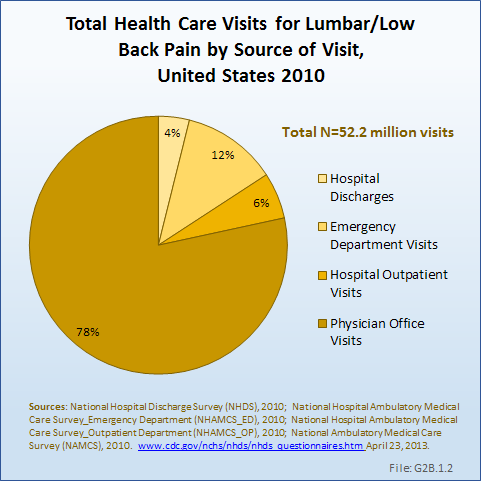


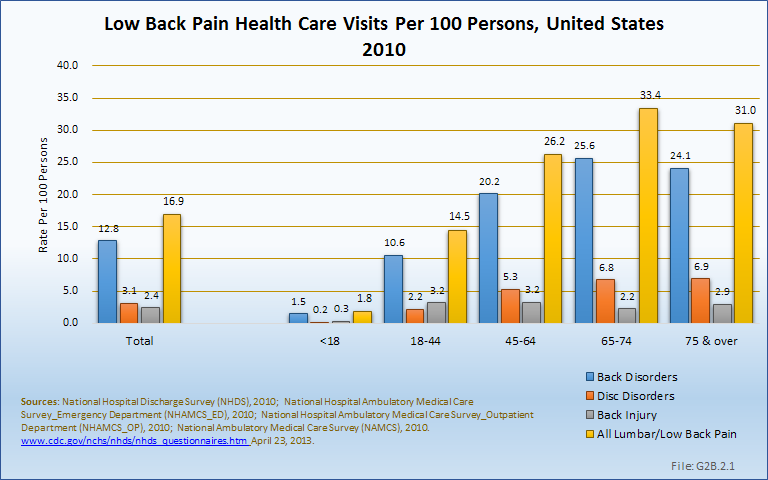
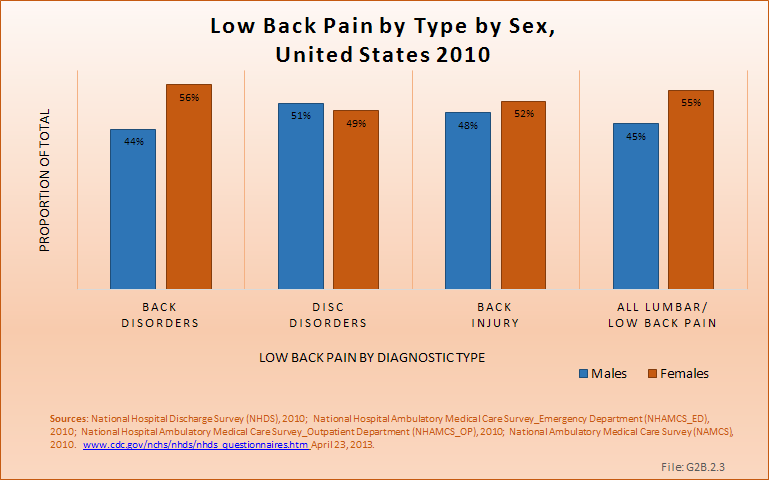
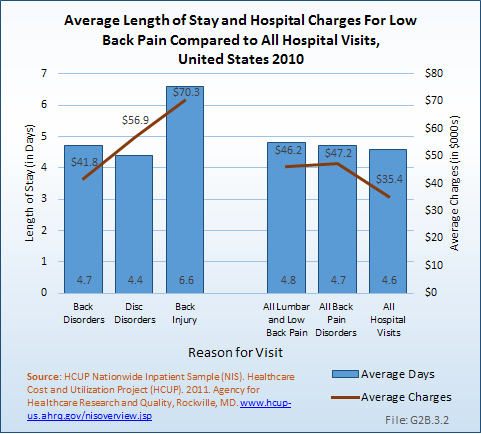

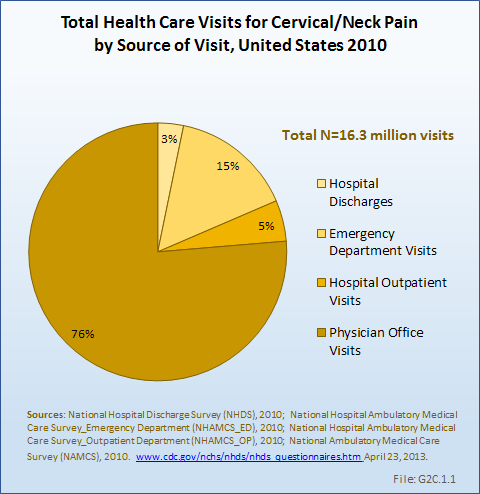
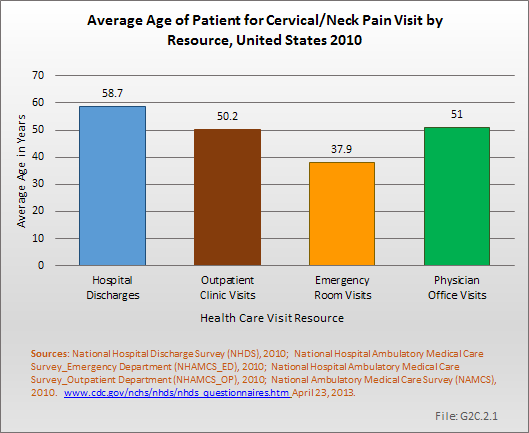

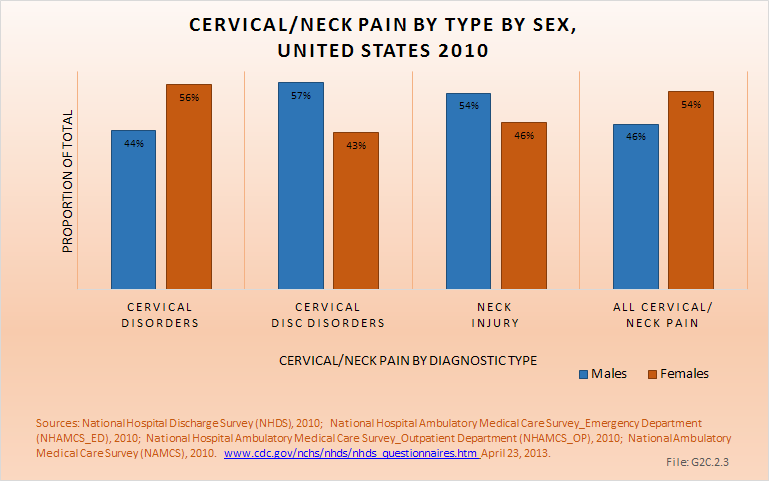

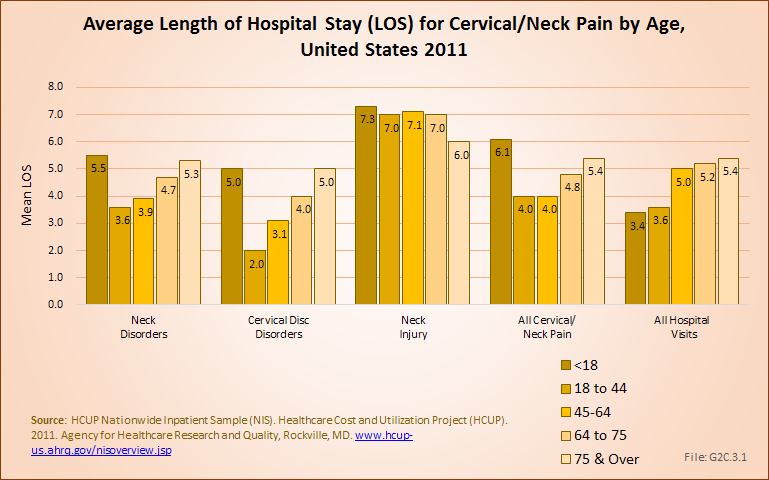
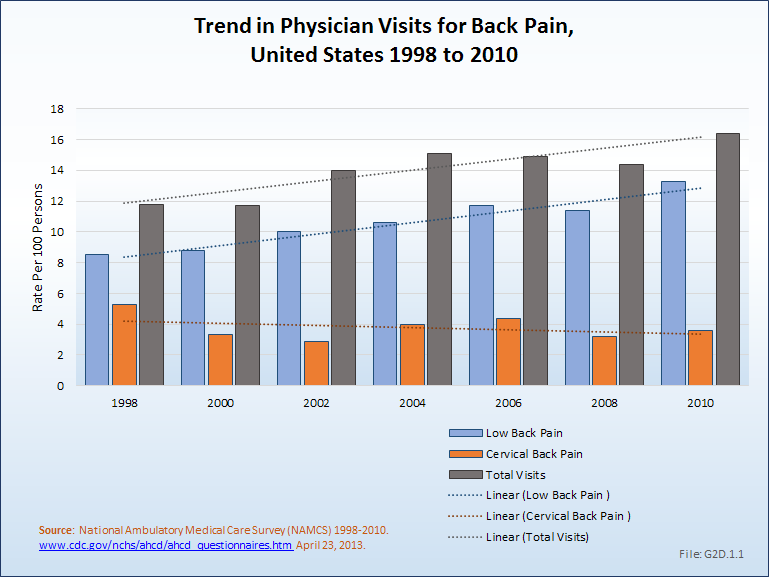
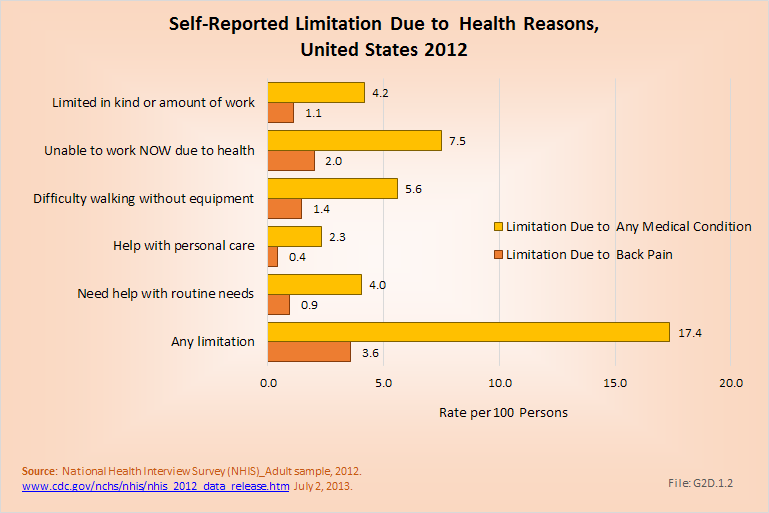
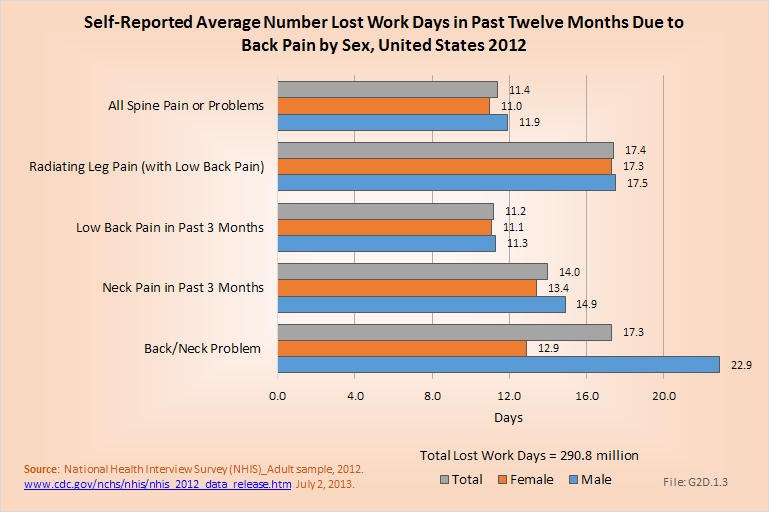
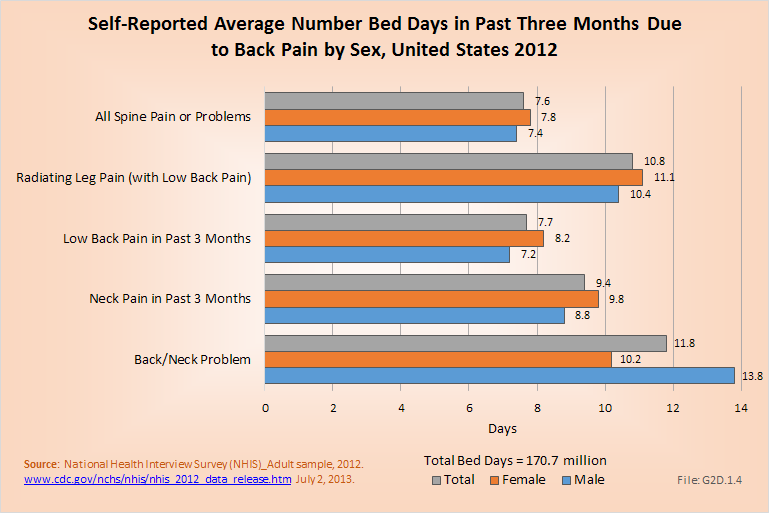
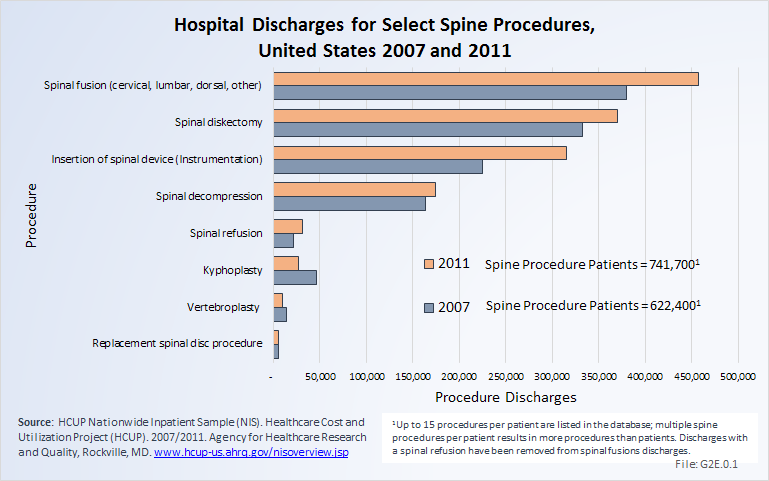
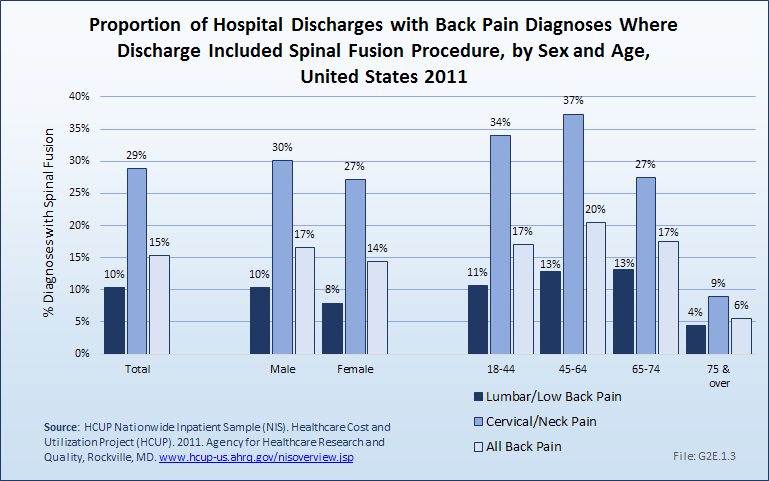
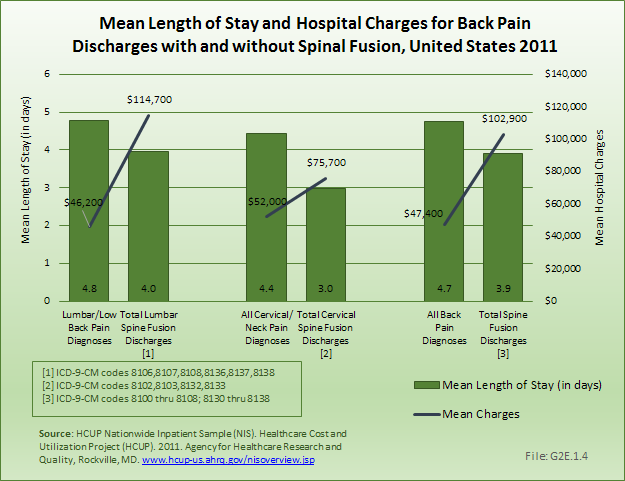

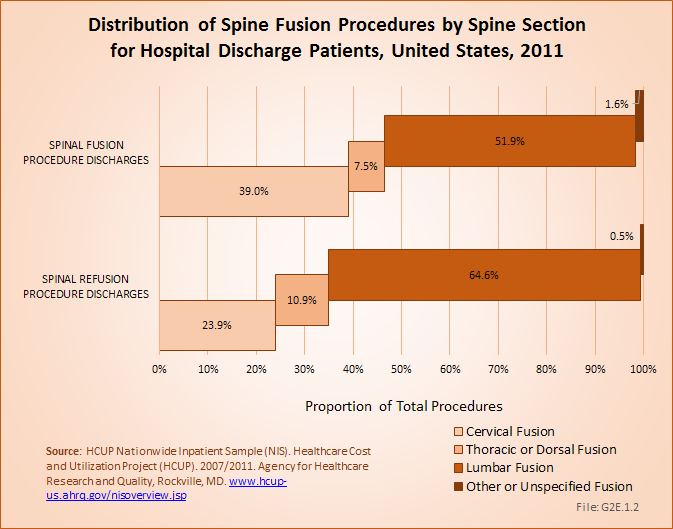
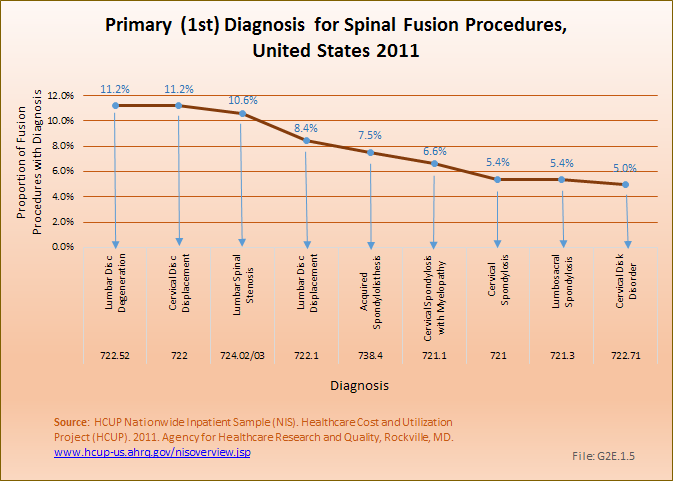

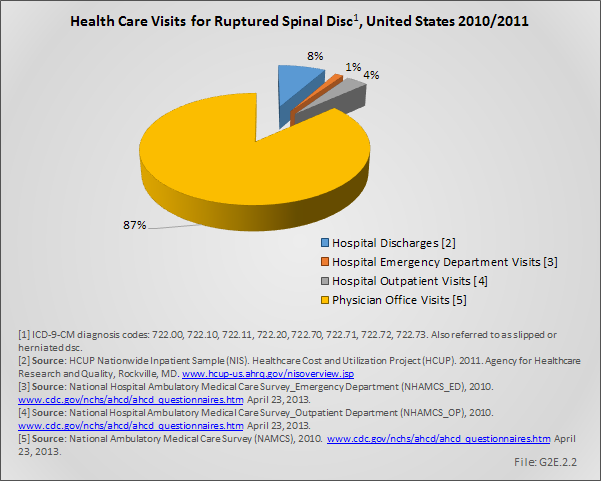
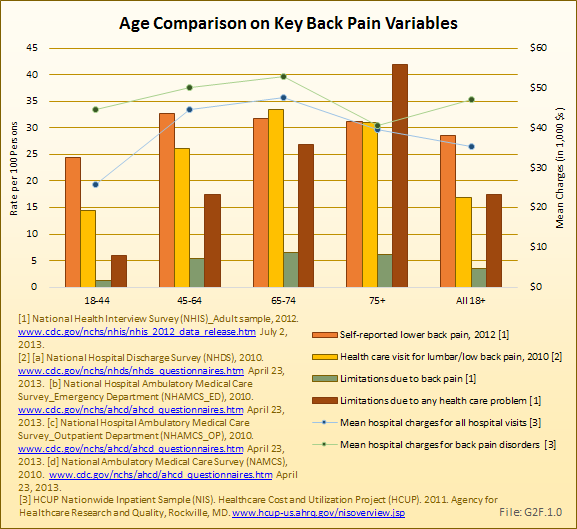
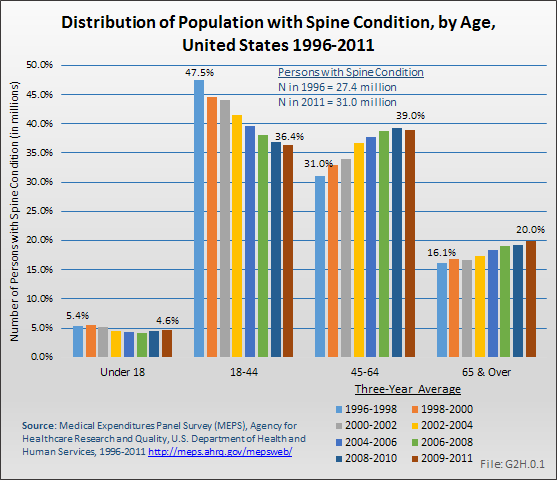
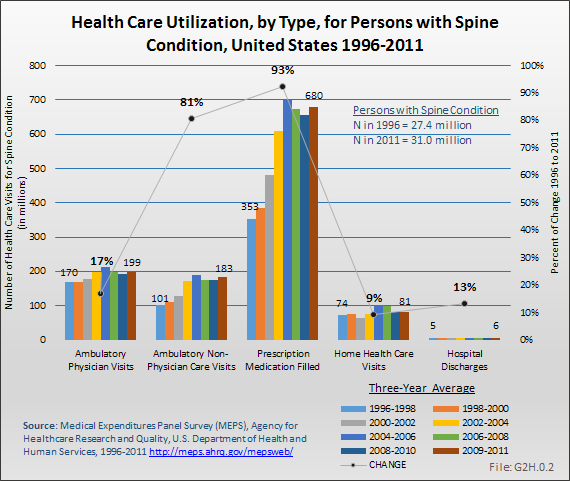
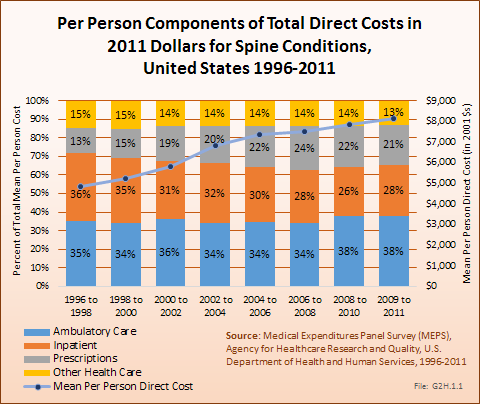

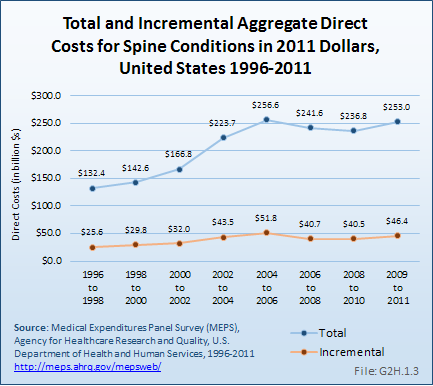
 Download as CSV
Download as CSV